Showing Spotlights 505 - 512 of 2778 in category All (newest first):
 Optical biosensors and micromotors that can sense and actuate biological environments are considered promising theranostic devices because of their high spatial resolution and flexibility.
Advancing the field from synthetic sensors to living materials - which often can be incompatible with biological systems - researchers have assembled living biosensors and micromotors using an in vivo red blood cell (RBC) waveguide for applications in pH sensing and particle transport. This living biosensor can be used for the diagnosis of pH-related disorders of the blood; then, the waveguide can rotate as a micromotor and transport microparticles to the target region.
Optical biosensors and micromotors that can sense and actuate biological environments are considered promising theranostic devices because of their high spatial resolution and flexibility.
Advancing the field from synthetic sensors to living materials - which often can be incompatible with biological systems - researchers have assembled living biosensors and micromotors using an in vivo red blood cell (RBC) waveguide for applications in pH sensing and particle transport. This living biosensor can be used for the diagnosis of pH-related disorders of the blood; then, the waveguide can rotate as a micromotor and transport microparticles to the target region.
Dec 16th, 2019
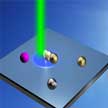 Researchers show that by introducing a surfactant layer to modify the particle-substrate interactions, a variety of colloidal particles can be manipulated in a non-invasive and contactless way through coordinating optical heating and scattering forces. This novel technique provides a versatile and powerful platform to manipulate and reconfigurably assemble colloidal particles on solid substrates, without the need to involve fluidic environments. This technique represents a milestone in pushing the working conditions of optical tweezers from fluidic to solid phases, which is capable of versatile manipulation and dynamic assembly of colloidal nanostructures on solid substrates directly.
Researchers show that by introducing a surfactant layer to modify the particle-substrate interactions, a variety of colloidal particles can be manipulated in a non-invasive and contactless way through coordinating optical heating and scattering forces. This novel technique provides a versatile and powerful platform to manipulate and reconfigurably assemble colloidal particles on solid substrates, without the need to involve fluidic environments. This technique represents a milestone in pushing the working conditions of optical tweezers from fluidic to solid phases, which is capable of versatile manipulation and dynamic assembly of colloidal nanostructures on solid substrates directly.
Dec 13th, 2019
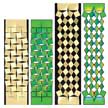 Researchers have identified kirigami as an intriguing tool to create programmable mechanical metamaterials with unconventional mechanical and morphological responses. These reconfigurable metamaterials offer a new material platform to achieve dramatic changes of mechanical and optical properties, which are arising from dynamically tunable geometrical structures. A key feature of kirigami metamaterials is that they are conveniently cut when flat and then exploit local elastic instabilities to transform into complex 3D configurations upon stretching.
Researchers have identified kirigami as an intriguing tool to create programmable mechanical metamaterials with unconventional mechanical and morphological responses. These reconfigurable metamaterials offer a new material platform to achieve dramatic changes of mechanical and optical properties, which are arising from dynamically tunable geometrical structures. A key feature of kirigami metamaterials is that they are conveniently cut when flat and then exploit local elastic instabilities to transform into complex 3D configurations upon stretching.
Dec 12th, 2019
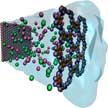 Reverse osmosis (RO) is one of the most effective desalination technologies for producing freshwater from seawater. The reverse osmosis membrane water reclamation processes is very energy intensive - not exactly an advantage given the rising cost of energy and the negative climate impact of fossil fuels. In a new study, researchers found that metal-organic frameworks (MOF) allow higher water flux compared to other 2D materials while rejecting almost 100% of unwanted ions.
Reverse osmosis (RO) is one of the most effective desalination technologies for producing freshwater from seawater. The reverse osmosis membrane water reclamation processes is very energy intensive - not exactly an advantage given the rising cost of energy and the negative climate impact of fossil fuels. In a new study, researchers found that metal-organic frameworks (MOF) allow higher water flux compared to other 2D materials while rejecting almost 100% of unwanted ions.
Dec 11th, 2019
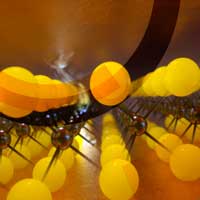 Nanoengineering is a branch of engineering that exploits the unique properties of nanomaterials - their size and quantum effects - and the interaction between these materials, in order to design and manufacture novel structures and devices that possess entirely new functionality and capabilities, which are not obtainable by macroscale engineering. The book 'Nanoengineering: The Skills and Tools Making Technology Invisible' puts a spotlight on some of the scientists who are pushing the boundaries of technology and it gives examples of their work and how they are advancing knowledge one little step at a time.
Nanoengineering is a branch of engineering that exploits the unique properties of nanomaterials - their size and quantum effects - and the interaction between these materials, in order to design and manufacture novel structures and devices that possess entirely new functionality and capabilities, which are not obtainable by macroscale engineering. The book 'Nanoengineering: The Skills and Tools Making Technology Invisible' puts a spotlight on some of the scientists who are pushing the boundaries of technology and it gives examples of their work and how they are advancing knowledge one little step at a time.
Dec 4th, 2019
 Researchers have produced graphene by molten carbonate electrolytic splitting of CO2 to a nano-thin carbon product (carbon nanoplatelets) comprised of 25 to 125 graphene layers, and subsequent electrochemical exfoliation of the nanoplatelets to graphene in a carbonate soluble aqueous solution. The sole products of the carbon dioxide electrolysis are straightforward: high yield carbon nanoplatelets and oxygen. The carbon nanoplatelets provide a thinner starting point than a conventional graphite reactant to facilitate electrochemical exfoliation.
Researchers have produced graphene by molten carbonate electrolytic splitting of CO2 to a nano-thin carbon product (carbon nanoplatelets) comprised of 25 to 125 graphene layers, and subsequent electrochemical exfoliation of the nanoplatelets to graphene in a carbonate soluble aqueous solution. The sole products of the carbon dioxide electrolysis are straightforward: high yield carbon nanoplatelets and oxygen. The carbon nanoplatelets provide a thinner starting point than a conventional graphite reactant to facilitate electrochemical exfoliation.
Dec 2nd, 2019
 Researchers have demonstrated the first large-scale flexible thermal flow sensor array on a thin-film. This flow sensor - based on a calorimetric sensing mechanism - can not only monitor flow intensity but also flow direction. More importantly, these sensors can be attached onto curved surfaces for real-time flow monitoring. Flow separation is a common phenomenon affecting aircraft, wind turbine blades, micro aerials, and underwater vehicles. Owing to its unsteady flow profile, such separation is usually undesirable because either the airfoil efficiency decreases or large pressure fluctuations emerge. Consequently, precise monitoring is crucial to reduce or even prevent the flow separation effect.
Researchers have demonstrated the first large-scale flexible thermal flow sensor array on a thin-film. This flow sensor - based on a calorimetric sensing mechanism - can not only monitor flow intensity but also flow direction. More importantly, these sensors can be attached onto curved surfaces for real-time flow monitoring. Flow separation is a common phenomenon affecting aircraft, wind turbine blades, micro aerials, and underwater vehicles. Owing to its unsteady flow profile, such separation is usually undesirable because either the airfoil efficiency decreases or large pressure fluctuations emerge. Consequently, precise monitoring is crucial to reduce or even prevent the flow separation effect.
Nov 26th, 2019
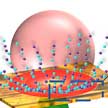 The origin of early life and the basic building blocks such as DNA and RNA have been hypothesized to have resulted due to accumulation of precursors within hydrothermal vents. The thermal gradients result in the concentration of prebiotic molecules with the vents acting as reactors. Researchers have translated this concept of accumulation-mediated concentration to the micro- and nanoscale for intensified materials synthesis and genomics. Utilizing a laser-induced micro bubble trap, their strategy, termed as unified spatiotemporal synthesis and structuring (US3), combines the conventionally discrete aspects of synthesis and patterning.
The origin of early life and the basic building blocks such as DNA and RNA have been hypothesized to have resulted due to accumulation of precursors within hydrothermal vents. The thermal gradients result in the concentration of prebiotic molecules with the vents acting as reactors. Researchers have translated this concept of accumulation-mediated concentration to the micro- and nanoscale for intensified materials synthesis and genomics. Utilizing a laser-induced micro bubble trap, their strategy, termed as unified spatiotemporal synthesis and structuring (US3), combines the conventionally discrete aspects of synthesis and patterning.
Nov 19th, 2019
 Optical biosensors and micromotors that can sense and actuate biological environments are considered promising theranostic devices because of their high spatial resolution and flexibility.
Advancing the field from synthetic sensors to living materials - which often can be incompatible with biological systems - researchers have assembled living biosensors and micromotors using an in vivo red blood cell (RBC) waveguide for applications in pH sensing and particle transport. This living biosensor can be used for the diagnosis of pH-related disorders of the blood; then, the waveguide can rotate as a micromotor and transport microparticles to the target region.
Optical biosensors and micromotors that can sense and actuate biological environments are considered promising theranostic devices because of their high spatial resolution and flexibility.
Advancing the field from synthetic sensors to living materials - which often can be incompatible with biological systems - researchers have assembled living biosensors and micromotors using an in vivo red blood cell (RBC) waveguide for applications in pH sensing and particle transport. This living biosensor can be used for the diagnosis of pH-related disorders of the blood; then, the waveguide can rotate as a micromotor and transport microparticles to the target region.
 Subscribe to our Nanotechnology Spotlight feed
Subscribe to our Nanotechnology Spotlight feed





